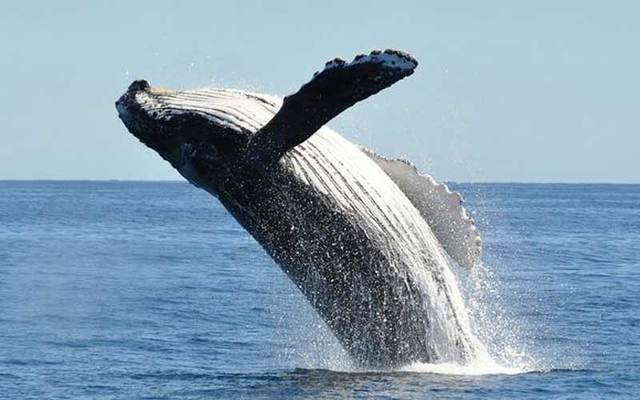A groundbreaking new study examining the impact of maritime traffic and noise pollution on marine life will offer a peek into the "secret world" of the whales, dolphins and porpoises living off Ireland’s southern coast.
The south-west coast of Ireland is an important foraging, resting and reproductive habitat for 25 species of cetaceans (whales, dolphins and porpoises), particularly humpback, fin, and minke whales.
It is also one of the busiest "heavy ship" shipping lanes in the world, with thousands of large container ships passing through the waters annually, The Irish Examiner reports. Pleasure craft, speed boats and recreational vessels also frequently travel along the coast.
Read More: Humpback whales swimming off Cork coast, 20 years on
Such heavy ship traffic places whales at an increased risk of ship strikes, which can cause injury and death. Meanwhile, the ambient noise pollution affects a multitude of marine species, hindering animal communication and feeding.
The Automated Cetacean Acoustics Project (ACAP) will deploy acoustic monitoring equipment in the Celtic Sea where sightings of whales and other marine life have been recorded. The hydrophones will be able to listen for the presence of whales and provide real-time detection, offering insight into the soundscapes of the marine animals' habitat. The study ultimately aims to relay warning alerts to maritime traffic to reduce vessel speed, lessening the risk of disturbances and ship strikes to marine animals.
Ocean Research & Conservation Ireland, a non-profit conservation group based in Cork, will conduct the acoustic monitoring study in partnership with the Rainforest Connection.
“Recent advances in technology provide increasing opportunity to use these innovations for good and to enhance our understanding of the natural world,” said lead researcher Emer Keaveney, a marine mammal ecologist at Ocean Research & Conservation Ireland.
“This is such an exciting time as now we have a chance to peer inside the secret world of whales in Irish waters, and directly improve their welfare and conservation.
According to the organization, the project will help inform policy and decision makers in the establishment and management of potential marine protected areas (MPA’s). The detections gathered by the study will also be used for education and made available to the wider public to hear the symphony of cetacean sounds.
Read More: Irish scientists survey fascinating wildlife along the western Irish coast
“In the lives of whales and dolphins, sound has taken an incredible variation in shapes and functions. From the ‘acoustic vision’ of echolocation in dolphins to the complex and harmonious structure of humpback whales songs, we can understand how critical sound is for the survival and welfare of cetaceans," said Davide Lelong, Bio-acoustician, Ocean Research & Conservation Ireland.
"As the oceans grows louder without control due to human activities, what used to be symphony of life becomes a cacophony of noises where whales are growing quieter and deaf."
Huawei Ireland is supporting the project by providing a research grant with technological support through its global Tech4All initiative.




Comments